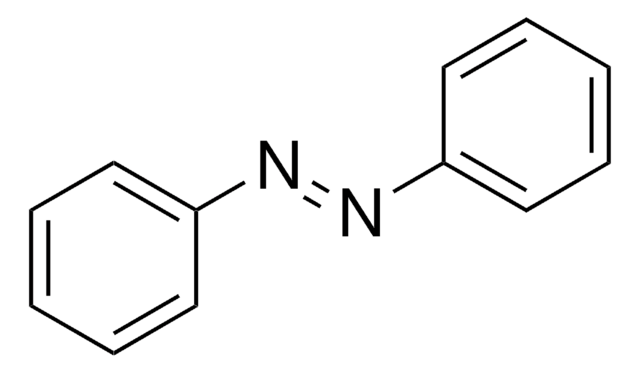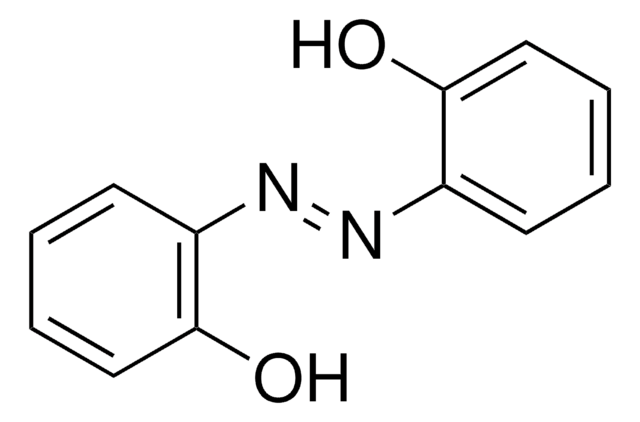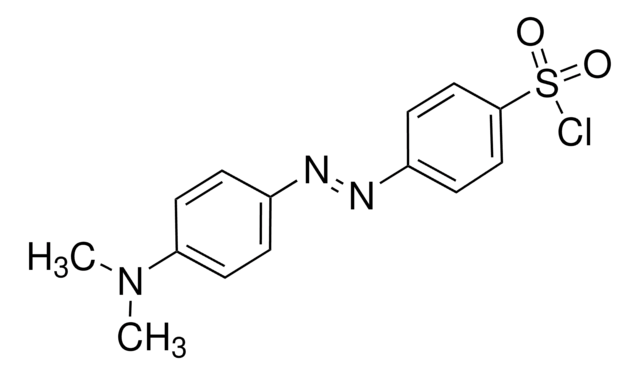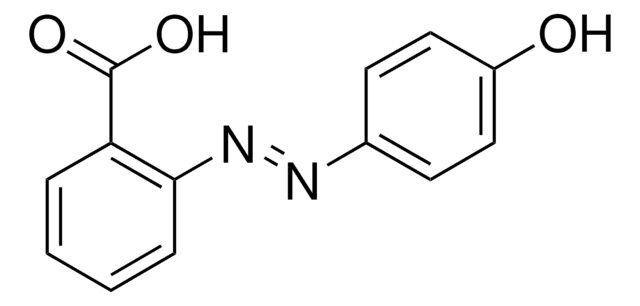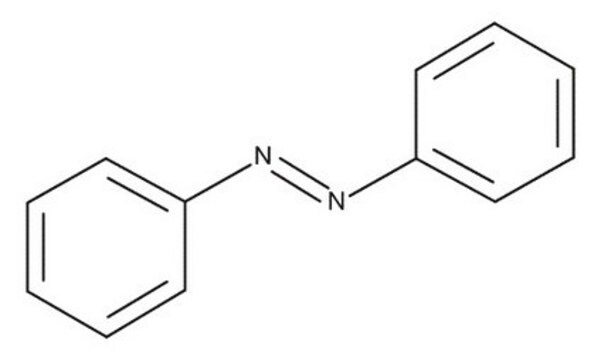479624
4-(Phenylazo)benzoic acid
98%
Sinónimos:
4-(2-Phenyldiazenyl)benzoic acid, 4-Carboxyazobenzene, Azobenzene-4-carboxylic acid, Azoic acid, p-Phenylazobenzoic acid
About This Item
Productos recomendados
Nivel de calidad
Análisis
98%
mp
247-250 °C (lit.)
cadena SMILES
OC(=O)c1ccc(cc1)\N=N\c2ccccc2
InChI
1S/C13H10N2O2/c16-13(17)10-6-8-12(9-7-10)15-14-11-4-2-1-3-5-11/h1-9H,(H,16,17)/b15-14+
Clave InChI
CSPTZWQFHBVOLO-CCEZHUSRSA-N
Categorías relacionadas
Descripción general
Aplicación
Palabra de señalización
Warning
Frases de peligro
Consejos de prudencia
Clasificaciones de peligro
Eye Irrit. 2 - Skin Irrit. 2 - STOT SE 3
Órganos de actuación
Respiratory system
Código de clase de almacenamiento
11 - Combustible Solids
Clase de riesgo para el agua (WGK)
WGK 3
Punto de inflamabilidad (°F)
Not applicable
Punto de inflamabilidad (°C)
Not applicable
Elija entre una de las versiones más recientes:
¿Ya tiene este producto?
Encuentre la documentación para los productos que ha comprado recientemente en la Biblioteca de documentos.
Los clientes también vieron
Nuestro equipo de científicos tiene experiencia en todas las áreas de investigación: Ciencias de la vida, Ciencia de los materiales, Síntesis química, Cromatografía, Analítica y muchas otras.
Póngase en contacto con el Servicio técnico
![4-[4-(Dimethylamino)phenylazo]benzoic acid N-succinimidyl ester ≥98.0% (HPLC)](/deepweb/assets/sigmaaldrich/product/structures/120/235/500b5276-3ce2-43b7-9588-3883f13d4ff7/640/500b5276-3ce2-43b7-9588-3883f13d4ff7.png)



